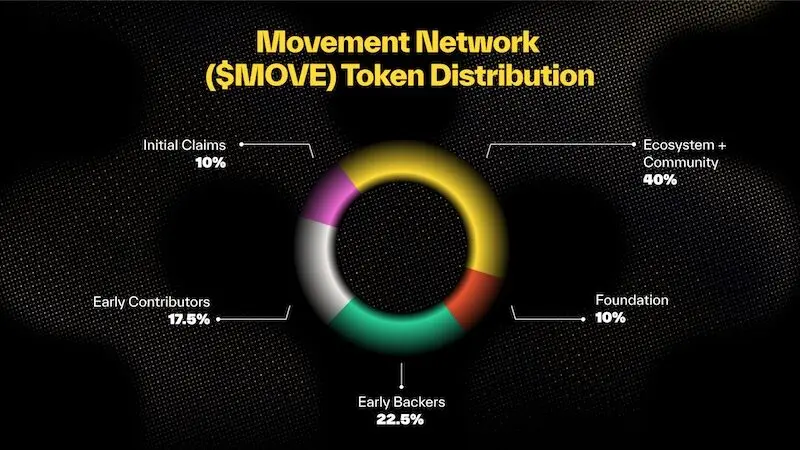Movement Network unveils its Movement Mainnet and MOVE token, using the Move Virtual Machine for secure, high-speed transactions and DeFi-AI integration.
Because of the expressiveness and distinctive architecture of the Move programming language, developers are still drawn to Move-based blockchains.
The Movement Mainnet, an Ethereum scaling solution that employs the Move Virtual Machine to resolve transactions to the Ethereum network with a one-second finality time, and the corresponding MOVE token production event were announced by the Movement Network Foundation on December 9.
Co-founder of Movement Labs Rushi Mande stated in an interview with Cointelegraph, “Our general thesis was Move is a phenomenal language, very secure, high throughput, but it needed two major things.” Mande went on:
“One is an ecosystem — a vibrant ecosystem. Apps that people were using that were well-funded and got to market. And secondly, a community where the native community was bootstrapped and loyal to the chain.”
To serve the network and guarantee an ideal execution environment, infrastructure providers will deploy RPC nodes, follower nodes, and indexers during the first deployment phase, beginning with the network’s beta launch.

Movement Mainnet’s three primary objectives
Rushi Mande listed three objectives for the Movement Mainnet: securing the DeFi industry, emphasizing the Movement ecosystem’s and AI’s convergence, and developing a mobile-first platform.
“DeFi is costly, but more significantly, it is extremely insecure. Mande told Cointelegraph, “Every year, $4.5 billion is lost.” Hackers took $71 million from DeFi customers in November alone.
The co-founder of Movement Labs also pointed out that companies such as Axle were introducing AI agents to Movement. In the present market cycle, artificially intelligent agents in cryptocurrency have emerged as a compelling narrative.
Complex tasks, such as executing trading strategies and interfacing with decentralized finance protocols, are automated by AI agents. Smart contracts can also be integrated with automated AI agents to expand functionality.
“We want to focus on mobile-first vertical form,” Mande stated. The co-founder of Movement Labs is not the only one who thinks that. Mobile technologies and applications can promote widespread Web3 adoption, especially among Gen Z.
As satellite telecommunications technology advances, mobile platforms can also help bank the unbanked in underdeveloped nations. Regardless of local infrastructure, anyone with a mobile phone can access global markets anywhere.



